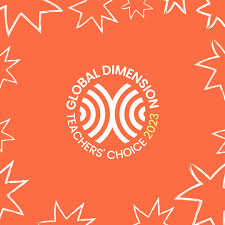International Day of Peace, observed every year on September 21st, is dedicated to promoting peace throughout the world. Children are the future, and involving them in activities that emphasize harmony and understanding is vital. Here’s a list of 15 activities tailored for kids that celebrate this day:
1. Peace Dove Origami: Origami is a peaceful and meditative activity. Teach children how to fold paper doves, which are international symbols of peace.
2. World Map Mural: Have kids collaborate on a large mural of the world map where they can mark places they know or have learned about where peace is needed.
3. Peaceful Heroes Discussion: Share stories of famous figures like Martin Luther King Jr., Mahatma Gandhi, and Malala Yousafzai who stood for peace.
4. Crafting Peace Wristbands: Kids can make wristbands with words or symbols of peace on them to wear.
5. Planting a Peace Garden: Dedicate a space in your garden or community area to plant flowers or trees that represent peace.
6. International Music Jam: Play music from different countries and encourage kids to dance and celebrate diverse cultures in harmony.
7. ‘Pinwheels for Peace’ Project: Create pinwheels with personal messages of peace and plant them outside as public art installations.
8. Peace Rocks Painting: Collect rocks and have children paint them with inspiring messages or images of peace, then place them around the neighborhood.
9. Storytime with Peace-Themed Books: Choose books that address topics like conflict resolution, empathy, and cultural understanding for storytime.
10. Meditation Session: Teach basic meditation techniques to help children find inner peace and learn how to manage conflicts peacefully.
11. Write Letters to Leaders: Encourage children to write letters to local or international leaders expressing their wishes for a more peaceful world.
12. Cook an International Meal: Cooking dishes from other cultures can be an insightful experience for children to appreciate diversity in a peaceful way.
13. Community Service Projects: Engage kids in community service projects that promote kindness, such as visiting a nursing home or organizing a charity drive.
14. Peace Parade in the Community: Organize a parade where kids can showcase their crafts and spread messages of peace around the neighborhood.
15. Puzzle Piece Pathway: Each child designs a puzzle piece with their vision of peace; combine all pieces to create a ‘pathway’ showcasing the collective hope for peace.
Incorporating these activities into children’s lives not only commemorates International Day of Peace but also fosters an ongoing culture of non-violence and respect for others in young minds.
World Space Week 2018 is Ready for Take-Off!
The global celebration of space exploration, achievement, and education is upon us once again. World Space Week 2018 is gearing up to reach new heights from October 4th to October 10th, and this year promises an experience that’s out of this world.
In alignment with the United Nations General Assembly declaration in 1999, World Space Week has been commemorated every year, during these dates, to mark two significant milestones: The launch of Sputnik I on October 4, 1957, which heralded the era of space exploration, and the signing of the Outer Space Treaty on October 10, 1967.
The theme for World Space Week 2018 is “Space Unites the World,” reflecting the way in which space exploration brings together people from all walks of life and from every corner of the globe. This theme resonates with the unifying power of space activities and promotes space as a tool for development across different countries.
Throughout the week, various events will take place around the globe. These will include educational programs aimed at students to stimulate their interest in STEM subjects; panel discussions with industry experts focusing on current topics affecting space and science; exhibitions showcasing technological innovations in space travel; stargazing events organized by local astronomical societies; and film screenings that feature space-related documentaries.
One of the highlights this year is expected to be increased participation from emerging space nations. By sharing their unique perspectives and recent advancements in space technology, these countries add to the diverse tapestry that represents humanity’s efforts in space.
Amateur astronomers, professional space explorers, educators, students and simply those curious about what lies beyond our atmosphere can find an event nearby or participate online. Local organizations are able to register their events on the World Space Week website so that participants can easily find activities taking place in their region.
As an international celebration, World Space Week not only acknowledges past accomplishments but also looks forward to new challenges on the horizon. With private companies like SpaceX revolutionizing access to space and NASA’s plans for future Mars missions stirring up excitement, there is much to talk about in 2018.
We stand at a pivotal moment in our cosmic journey. This year’s events are certain to inspire future generations and emphasize that now more than ever before, we need international cooperation in our shared celestial endeavors. The sky is not just a destination—it’s a promise of continued human curiosity, innovation, and discovery.
Experience a week filled with wonder and prepare for liftoff—World Space Week 2018 is ready to make history once again. Join us as we continue to look toward the stars and dream about what lies beyond our world.
Talking To Kids About Ukraine: How Teachers Can Help Students
As global events continue to unfold, children are increasingly exposed to news and stories that can be difficult for them to understand and process. The ongoing situation in Ukraine is no exception, with images and narratives that may evoke a range of strong emotions in students. Teachers have a crucial role to play in guiding these young minds through such challenging times. This article will explore how teachers can talk to kids about Ukraine and offer support to students as they navigate this complex issue.
Educators are often on the front lines when it comes to addressing children’s curiosity, fears, and misconceptions about world events. When discussing Ukraine, it’s important for teachers to provide accurate information that is appropriate for the children’s developmental level. Here are some approaches educators can take:
1.Foster an Open Dialogue:
Create a safe space in the classroom where students can express their thoughts and feelings about what they have heard or seen regarding Ukraine. An open dialogue encourages them not just to ask questions but also to share their emotions, whether those be confusion, anxiety, or a longing to help.
2.Present Facts Thoughtfully:
Provide straightforward facts without going into graphic details or political complexities that children might find confusing or distressing. For example, teachers can explain that there’s a conflict in Ukraine which has led many people to leave their homes in search of safety.
3.Promote Critical Thinking:
Encourage students to think critically about the information they come across, helping them understand the difference between verified news and unconfirmed sources or opinions. This skill not only assists them in the context of current events but is invaluable for their overall media literacy.
4.Cultivate Compassion:
Use discussions as opportunities to foster empathy by putting emphasis on common values such as peace, kindness, and resilience. Highlight stories of how individuals and communities support each other during hard times.
5.Incorporate Creative Expression:
Sometimes children might find it easier to express their thoughts through art or storytelling rather than straightforward conversation. Encouraging creative expression allows for a non-verbal outlet for their thoughts and feelings related to the conflict.
6.Support Positive Action:
If children feel helpless or sad about what’s happening in Ukraine, guide them towards positive actions they can take. This could be organizing fundraising events, writing encouraging letters, or simply learning more about the country’s culture and history.
7.Maintain Routine:
During unsettling times, maintaining a consistent classroom routine is reassuring for children and provides a sense of normalcy amidst chaos.
8.Offer Additional Support When Needed:
Be attuned to signs that some students may struggle more than others with what they are learning about Ukraine. Escalate concerns where necessary so that additional support from school counselors or psychologists can be provided.
In summary, talking about complex global issues like the conflict in Ukraine requires sensitivity, honesty, and thoughtfulness from teachers. It is part of educating well-rounded students who are informed, empathetic global citizens equipped to navigate an increasingly connected world. To be effective in these conversations, educators need support from parents and school administrators so they can provide accurate information while also addressing emotional needs—and where needed—connecting students with further resources for support.
Talking to Kids About Ukraine A Guide for Teachers and Students
Introduction:
In an increasingly connected world, it is important for educators to foster understanding and create a safe space for students to explore geopolitical events and issues. One such current event is the situation in Ukraine. This article aims to provide teachers and students with a guide on how to approach discussions about Ukraine, its history, and the ongoing conflict. By equipping ourselves with knowledge and empathy, we can encourage constructive dialogue and promote global awareness among our young learners.
1. Understanding Ukraine’s History:
To initiate a conversation about Ukraine, it is crucial to provide some historical context. Ukraine, located in Eastern Europe, has a rich and complex history that spans centuries. Discuss significant events such as the Kyivan Rus, Mongol invasion, Cossack era, and Soviet rule to help students grasp the country’s historical trajectory.
2. Introducing the Current Conflict:
Explaining the current conflict in Ukraine requires sensitivity and balance. Emphasize the importance of impartiality and the need to consider multiple perspectives. Introduce the key players, including the Ukrainian government, pro-Russian separatists, and international actors involved. Encourage students to examine various sources of information to develop a well-rounded understanding.
3. Nurturing Empathy and Active Listening:
Engage students in discussions by fostering empathy and active listening skills. Encourage them to explore diverse viewpoints and challenge their own preconceived notions. Create a safe space where students can share their thoughts and emotions about the conflict while respecting others’ opinions.
4. Promoting Critical Thinking:
Teach students to think critically and analyze different sources of information. Discuss media literacy and help them identify biased reporting or propaganda. Encourage them to fact-check and verify information from trustworthy sources. By cultivating critical thinking skills, students can independently form well-informed opinions.
5. Exploring Humanitarian Consequences:
Discuss the humanitarian impact of the conflict in Ukraine. Highlight the challenges faced by displaced individuals, children, and families affected by the violence. Help students understand the importance of compassion, empathy, and global responsibility in addressing such crises.
6. Creating Positive Change:
Encourage students to brainstorm ways they can make a positive impact in relation to the conflict in Ukraine. This can include fundraising for humanitarian organizations, writing letters to policymakers, or organizing awareness campaigns. Empower students to believe in their ability to contribute to a better world.
Conclusion:
Talking to kids about Ukraine should involve an inclusive and balanced approach that promotes critical thinking, empathy, and global awareness. By guiding students through these discussions, educators can help foster a generation that values peace, understanding, and cooperation in an interconnected world.
(NOTE: The content in this article is for informational purposes only and should not be considered a replacement for professional guidance or expertise. Teachers and parents are encouraged to adapt the information provided to suit their students’ individual needs and age appropriateness.)
World Kindness Day Each Kids To Be Kind
November 13th is celebrated as World Kindness Day, a day dedicated to promoting and spreading kindness all around the world. This special day serves as a reminder for us to be compassionate, considerate, and caring towards others. Teaching kids about kindness not only fosters a positive and inclusive community but also instills values that will benefit them throughout their lives.
Here are some ways to teach kids to be kind:
1.Lead by example: Children often learn by observing their parents and caregivers. Make sure you practice kindness in your own actions and words. Show empathy, respect, and patience towards others, and your kids will follow suit.
2.Teach empathy: Encourage children to understand other people’s feelings and perspectives. Help them develop empathy by asking questions like “How do you think they feel?” or “How would you feel in their situation?” This way, they can learn to appreciate diversity and understand the importance of treating others with kindness.
3.Encourage random acts of kindness: Give your kids opportunities to perform random acts of kindness, such as helping a friend, making a thoughtful gesture, or sharing their toys. Engage them in discussions about the positive impact these acts can have on others.
4.Promote inclusivity: Teach children the importance of including everyone and avoiding exclusion or bullying. Encourage them to make friends with people who may be different from them, whether it’s their background, abilities, or interests. Help them embrace diversity and celebrate the uniqueness in everyone.
5.Teach gratitude: Show kids how to appreciate the kindness shown to them and encourage them to express gratitude. Whether it’s a simple “thank you” or a handwritten note, teaching gratitude helps children acknowledge the kindness they receive and develop a positive mindset.
6.Practice active listening: Teach kids the importance of actively listening to others. Encourage them to give their full attention, maintain eye contact, and respond appropriately. Active listening fosters understanding and empathy, making it easier for kids to connect with others on a kind and compassionate level.
7.Engage in community service: Involve children in age-appropriate community service activities. It could be volunteering at a local shelter, participating in a neighborhood clean-up, or collecting donations for those in need. These experiences create a sense of purpose and expose kids to the realities faced by others, encouraging kindness and compassion.
Remember, teaching kindness is an ongoing process that requires consistent reinforcement and practice. By instilling these values in children, we can nurture a generation of empathetic and compassionate individuals who make the world a better place. Let’s celebrate World Kindness Day by spreading love, acceptance, and understanding in our homes, schools, and communities.
International Day Friendship Activities
International Friendship Day is a celebration designated to cherish friendship and acknowledge the role friends play in our lives. Recognized on July 30th globally, this day is an opportunity to promote peace and unity through fostering bonds between people, countries, and cultures. Here are some fun and thoughtful activities that individuals and communities can engage in to celebrate International Friendship Day:
1.Friendship Bracelets: Creating and exchanging friendship bracelets is a personal and traditional way to celebrate the bond between friends. It’s a simple craft that can be enjoyed by people of all ages.
2.Potluck Meal: Organize a potluck meal where each friend brings a dish from their own culture or family tradition. This not only allows everyone to share a piece of their heritage but also encourages cultural exchange and appreciation.
3.Volunteer Together: Strengthen your bond while giving back to the community by volunteering together at a local charity or non-profit organization.
4.Photo Album or Scrapbook: Collect photos and memories you’ve shared with your friends and compile them into an album or scrapbook as a keepsake.
5.Host a Movie Night: Choose films that celebrate friendship and arrange a cozy movie night with your circle of friends.
6.Picnic in the Park: Enjoy the outdoors by having a relaxing picnic in the park – just bring snacks, games, and enjoy each other’s company in nature.
7.Cultural Exchange Day: Learn about different cultures together by attending local cultural events or festivals that celebrate diversity.
8.Write Friendship Letters: In an age of digital communication, take the time to write heartfelt letters to your friends expressing gratitude and appreciation for their presence in your life.
9.Plant Trees Together: Commemorate your friendship by planting trees together; it is symbolic of growing your relationship while also contributing positively to the environment.
10.Friendship Awards: Create personalized awards or certificates for each friend, highlighting what makes each one special to you — great humor, always there when you need them, etc.
11.Group Video Call: If distance separates you, organize a group video call so everyone can catch up no matter where they’re located around the world.
12.Art Collaboration: Collaborate on an art project where each friend adds their unique touch – this could be painting, drawing, or even music.
13.Memory Challenge Game: Create a game where friends share memories or facts about each other, testing how well you know one another.
14.Cultural Pottery Session: Take part in pottery making with your friends while exploring various crafting techniques from different cultures.
15.Set up a Friends Fund: Start a savings pot with your friends for joint future adventures like trips or large joint purchases.
International Friendship Day is all about connecting with those important people who make our lives more meaningful—what better way to do so than participating in activities that express love, gratitude, and unity? Whether you’re right next door or across oceans from each other, there are countless ways to celebrate this special day with those you call ‘friends’.
Global poverty as a citizenship issue
Introduction
Global poverty is a complex issue that affects billions of people worldwide. As global citizens, we have the responsibility to address this problem not solely as an economic matter but also as a citizenship issue, taking into consideration that our actions can impact the lives of others far beyond our borders.
Understanding Global Poverty
Global poverty refers to the condition in which individuals or groups lack essential resources or income, resulting in a low standard of living. This disparity has been highlighted by factors such as unemployment, inequality, lack of access to education and healthcare, and natural disasters.
The Role of Citizenship in Tackling Poverty
Citizenship refers to the rights, duties, and responsibilities for an individual or group with a shared identity or belonging within a society. In this context, addressing global poverty becomes every citizen’s responsibility. Here are several ways through which citizenship can be made instrumental in alleviating poverty:
1. Political Engagement – Active participation in political processes within one’s country encourages governments to prioritize policies that decrease poverty and ensure inclusivity.
2. Ethical Consumption – Making thoughtful purchasing decisions based on environmental sustainability and social justice can create the demand needed for more equitable supply chains impacting those in developing nations.
3. Encouraging Corporate Social Responsibility – Supporting businesses that prioritize ethical practices ensures that they contribute positively to societies and help reduce global poverty.
4. Volunteering and Community Service – Engaging in community service or volunteering for projects aimed at poverty reduction both locally and internationally allows citizens to impact change directly.
5. Humanitarian Aid – Donations to reputable organizations committed to sustainable development goals and providing immediate aid during emergencies can instantly benefit millions of people facing extreme poverty.
6. Education and Awareness – Active awareness campaigns about global poverty can assist policymakers and civil society in forming collaborative efforts towards eradicating the issue.
Conclusion
In summary, global poverty is a persistent challenge affecting billions worldwide. As global citizens, we should recognize the importance of understanding and addressing this issue as our responsibility. By actively engaging in initiatives that contribute to poverty reduction, we reinforce our role as global citizens, ensuring a better and more equitable world for everyone. With collective action, we can make significant strides towards a poverty-free world.
Raising Pupils’ Awareness of Children’s Rights
Introduction:
Children’s rights are an essential aspect of the overall betterment of society, as they ensure a safe and healthy development for the young generation. It is crucial to raise pupils’ awareness of their rights and help them understand their significance and implications. Schools and educational institutions play a pivotal role in pioneering this awareness among students. This article sheds light on various methods to implement this important mission in our educational settings.
1. Incorporate Children’s Rights into the Curriculum:
The first step to effectively raise pupils’ awareness of children’s rights is by embedding them into the school curriculum. By incorporating concepts like cultural diversity, gender equality, and children’s rights, students will become familiar with these fundamental principles early in their educational journey. Lessons plans can be designed around topics such as child protection, access to education, participation in decision-making, and basic needs like nutrition, healthcare, and shelter.
2. Organize Workshops and Seminars:
Conducting workshops and seminars on children’s rights provides an interactive platform for students to comprehend these concepts better. Inviting experts from the field who can share real-life experiences will help sensitize students to the challenges faced by less fortunate children worldwide. These sessions can create a lasting impact on the young minds, driving them toward advocacy for children’s rights.
3. Encourage Active Student Participation:
Students need to be engaged in activities that allow them to actively learn about children’s rights. Encourage them to participate in group discussions, debates, or writing essays revolving around relevant themes such as poverty alleviation or child labor prevention. These activities will help them analyze the complexity of issues that affect millions of children globally.
4. Allocate Time for Reflection and Group Work:
Creating space within regular school hours where students can reflect on existing social issues will nurture empathetic individuals who possess a deep understanding of injustices faced by others. Group work can establish a sense of responsibility among peers and provide an opportunity to advocate for marginalized children’s rights collectively.
5. Use Art as a Medium for Expression:
Art can be a powerful tool to advocate for children’s rights. Encourage students to express their thoughts and emotions regarding children’s rights through various forms of art, such as painting, sculpture, photography, or creative writing. These artistic projects can then be displayed around the school or community to spread awareness and spark conversations.
6. Collaborate with Non-Governmental Organizations (NGOs):
Partnering with NGOs can expose students to real-life examples of grassroots child rights advocacy. NGOs can offer guidance on practical ways students can support those in need. Organizing field visits to working sites, underprivileged schools, or awareness camps will enable students to witness firsthand the importance of child rights advocacy.
Conclusion:
Raising pupils’ awareness of children’s rights is crucial for the all-round development of conscientious and empathetic global citizens. Through collective efforts from educators, parents, policymakers, and society at large, we can make significant strides in empowering our young generation to stand up for their rights and those of their peers worldwide. Ultimately, fostering a culture that values child rights advocacy will pave the way for global improvements in the lives of millions of children in need.
20 Activities That Spotlight Air Pollution
Air pollution is an issue that affects people around the world. With increasing urbanization, industrialization, and reliance on fossil fuels, the quality of the air we breathe has become a concern for many. To raise awareness and promote action against air pollution, here are 20 activities that spotlight this pressing environmental issue.
1. Organize an air pollution awareness campaign in your community, highlighting the causes and effects of poor air quality.
2. Coordinate a car-free day to reduce emissions and promote alternative modes of transportation, such as cycling or walking.
3. Plant trees in your neighborhood to help absorb pollutants and improve air quality.
4. Participate in a local clean-up event to remove litter and debris from streets and parks that can contribute to pollution.
5. Create educational materials about air pollution to distribute at schools, community centers, and public events.
6. Encourage local businesses to adopt energy-efficient practices to reduce their carbon footprint and emissions.
7. Organize a workshop on how to build homemade air purifiers using everyday materials.
8. Start an environmental club at your school or workplace to address air pollution issues and implement solutions.
9. Advocate for stricter emissions regulations by contacting your local politicians and representatives.
10. Host a film screening or documentary night about climate change and air pollution, followed by a group discussion on potential solutions.
11. Organize public transportation or carpooling initiatives to encourage people in your community to reduce their individual emissions.
12. Partner with local gyms or sports clubs to host outdoor workout events that raise awareness about the impact of air pollution on physical health.
13. Work with schools to implement indoor air quality monitoring systems that help identify pollutants affecting children’s health.
14. Host an Air Quality Awareness Week with various events, presentations, and activities focused on reducing pollution levels in your community.
15. Share information about air pollution monitoring apps that enable people to track the air quality in their area and take measures to protect themselves.
16. Initiate a campaign that promotes efficient waste management and recycling to minimize air pollution resulting from open burning of trash.
17. Advocate for a switch to renewable energy sources, such as solar or wind power, to reduce the reliance on fossil fuels and their emissions.
18. Coordinate a workshop for creating environmentally friendly cleaning products to reduce indoor air pollutants caused by chemical-based cleaning supplies.
19. Invite environmental experts to give presentations on air pollution at local events or conferences.
20. Utilize social media platforms to educate people about the effects of air pollution on health, climate, and the environment, and offer tips on how everyone can contribute to tackle this issue.
By engaging in these activities, we can raise awareness about air pollution and promote sustainable practices that reduce our impact on the environment. It takes collective effort at both local and global levels to combat this issue effectively; every small step counts towards a cleaner, healthier world for all.
Achieving Global Dimension: A Case Study
Introduction
In today’s globalized world, organizations have an unparalleled opportunity to expand their reach and impact. However, achieving a global dimension is no easy task. With cultural, logistical, and technological barriers to overcome, organizations must demonstrate exceptional adaptability, flexibility, and determination to secure their place on the international stage. This article presents a case study on “Achieving Global Dimension” by examining a business that has successfully achieved this goal and identifying the strategies implemented to make this possible.
The Company: Widgets International
Widgets International is a leading manufacturer of widgets. Founded in 2000 as a small local enterprise producing just one type of widget, the company has grown exponentially to become a multinational corporation with factories in six countries and distribution networks spanning multiple continents. Today, it stands as a shining example of what can be achieved with a strong focus on achieving global dimension.
Keys to Success
1. Strategic Planning: From the outset, Widgets International adopted a strategic approach to international expansion. The management team conducted comprehensive market research to identify potential growth areas and devised a plan for entering these markets in succession. This allowed the company to scale up its operations gradually while mitigating risks associated with rapid expansion.
2. Adaptability & Flexibility: Widgets International was acutely aware that success in one market did not guarantee success in another. As such, the company emphasized adaptability and flexibility in its approach to entering new markets. This involved tailoring products and marketing strategies to suit local preferences and recognitions, forging strategic partnerships with local businesses, meeting regional regulations requirements, and recruiting local talent wherever possible.
3. Technological Innovation: In order to remain ahead of competitors in an increasingly crowded marketplace, Widgets International prioritized technological innovation within its operations. Investment in research and development was substantial from day one and never waned – allowing the business to stay at the cutting edge of widget manufacturing solutions while also achieving impressive economies of scale.
4. Strong Organizational Culture: Widgets International recognized that globalization can often lead to organizational fragmentation, potentially diminishing the company’s core values and vision in pursuit of growth. To combat this, a strong organizational culture was cultivated and reinforced through regular communication, training programs, and cross-cultural initiatives designed to foster a sense of belonging and shared purpose among employees across the globe.
Conclusion
Achieving global dimension is undoubtedly a challenging endeavor for any organization. This case study highlights some key factors that contributed to Widgets International’s successful transformation from a small local business into a global industry leader. By focusing on strategic planning, adaptability, technological innovation, and strong organizational culture, WidgetsInternational serves as an inspiring example for businesses worldwide seeking to expand their reach and maximize their potential in an increasingly interconnected world.











